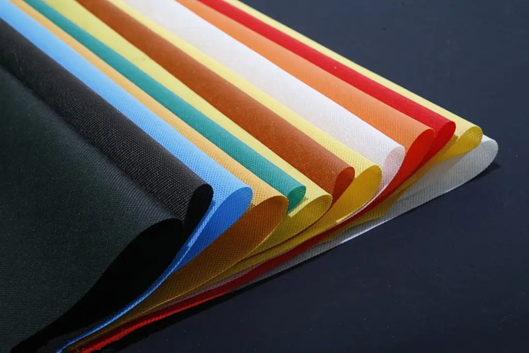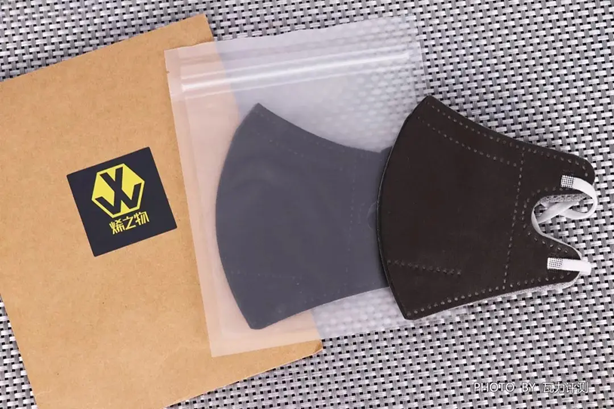The non-degradable petrochemical components in the raw materials of disposable masks make plastic pollution control a problem, and the innovative application of graphene materials is expected to change this situation. Chen Huaixia, a doctoral supervisor of the School of Chemistry and Chemical Engineering of Hubei University and a member of the Hubei Provincial Chromatography and Mass Spectrometry Academic Committee, told the Beijing Business Daily reporter that through the innovation of new technologies and new materials, graphene materials and non-woven materials were compounded to develop a super-graphene-friendly mask. The use time is 25 times that of traditional disposable masks, and the burden of waste pollution is reduced by 96%. In terms of economy, the effective use time of traditional masks is 4 hours, and the effective use time of graphene masks is more than 100 hours, only 4 pieces per month. Although graphene masks have brought about changes in the industry, as an important part of industrial textiles, the nonwovens industry has emerged relatively late in China. In recent years, the country and the industry have continued to introduce relevant standards, but compared with traditional textile industry standards It is missing, and after the emergence of new non-woven fabrics composited with materials such as graphene, where will the trend of industry standards develop?

"At present, waste masks are mainly disposed of in China by generating electricity through waste incineration plants, but this is not the best solution. At present, it can only be disposed of in this way when there is no way, and a degradable material must be used to solve this problem. ." Chen Zhengqiang, director of Hubei Nonwoven Technology Innovation Center, told reporters.
Under the growing demand, the environmental damage and pollution problems caused by the use of a large number of masks have also become problems that enterprises need to focus on solving. According to statistics, in 2020 alone, about 1.56 billion masks will flow into the ocean, bringing 4,680-6,240 tons of marine plastic pollution.
The new generation of masks developed by compounding graphene materials and non-woven fabrics opens up a new situation for technological innovation in the non-woven fabric industry. At the end of 2020, Hubei Ruikang cooperated with Wuhan Textile University, Tsinghua University, Hubei University and other institutions of higher learning to trial-produce graphene and nonwoven composite materials, and launched graphene antibacterial and antiviral masks in the subsequent application development of terminal products.
By reducing the amount of use, graphene masks alleviate the environmental damage caused by the extensive use of masks. Chen Huaixia, who participated in the research and development, revealed that the use time of graphene masks is 25 times that of traditional disposable masks, and the burden of waste pollution is reduced by 96%.

According to reports, the effective use time of traditional masks is 4 hours, and an average of 2-3 masks are needed per day, and the average daily use cost reaches 4-6 yuan. The official retail price of the graphene masks developed this time is 5.9 yuan per piece. Compared with ordinary disposable masks that cost 2-3 yuan per day on the market, because they can be reused, the effective protection time is 100 hours and can be used for 10 days. , equivalent to an average of 0.6 yuan per day.
According to Hu Xinzhen, chairman of Hubei Ruikang, there are two key points for the development of the mask industry in the future, one is to rely on the power of the government, and the other is to continue to promote the progress of production, education and research. Promote the upgrading of the nonwovens industry through technological innovation.
As the world's third largest industry, the textile industry is different from the "textile = clothing" in people's conventional impression. Textile products can be subdivided into three categories: clothing textiles, decorative textiles and industrial textiles. Among them, the rise of industrial textiles Late, but the development trend is more rapid.
Wang Kezuo, a second-level researcher of Hubei Fiber Inspection Bureau and secretary-general of Hubei Textile Standardization Technical Committee, told the Beijing Business Daily reporter that compared with the more mature technical standards and industry standards of textiles and decorative textiles, technical textiles are still There is a relatively obvious lack of standards. According to product application fields, my country divides technical textiles into 16 categories, most of which are non-woven fabric-related products.
"The current industry standards for nonwovens are mainly concentrated in the field of medical textiles." Wang Kezuo recalled, "For example, in 2020, the Textile Standardization Technical Committee took the lead in developing the group standard of "Disposable Masks for Primary and Middle School Students", which solved the problem of The problem of missing student mask standards in China."
In addition, as the country's largest non-woven product base, Xiantao is currently promoting the construction of a national non-woven fabric quality inspection center. 8 categories of non-woven fabrics, including cloth, are tested according to international and foreign advanced standards, which is conducive to further promoting the formulation and revision of non-woven fabric industry standards.
Relevant standards for the traditional nonwovens industry are gradually being rolled out, so with the launch of innovative products such as graphene masks, will it bring new changes to industry standards?
"At present, in the formulation of mask standards, the assessment of characteristic indicators is also a very important part. We will start from the overall manufacturing process of graphene non-woven fabrics, graphene meltblown fabrics, and graphene antibacterial and antiviral masks. A series of standards." Wang Kezuo believes that traditional masks focus more on "protection" against viruses, while the microbial killing function of graphene masks focuses on "killing". Therefore, adding graphene components to masks will bring subversive changes to the existing mask standards.
Wang Kezuo said that industry standards are not only related to the production of enterprises, but also the research institutions, universities and standardization professionals involved in the research and development process are closely related to it.

Hu Xinzhen revealed that Ruikang has already started the standardization work, and plans to cooperate with upstream and downstream enterprises to jointly launch new group standards for graphene spunbond non-woven fabrics, graphene melt-blown non-woven fabrics and graphene masks within one year.
Comment(0)
You can comment after
SIGN IN